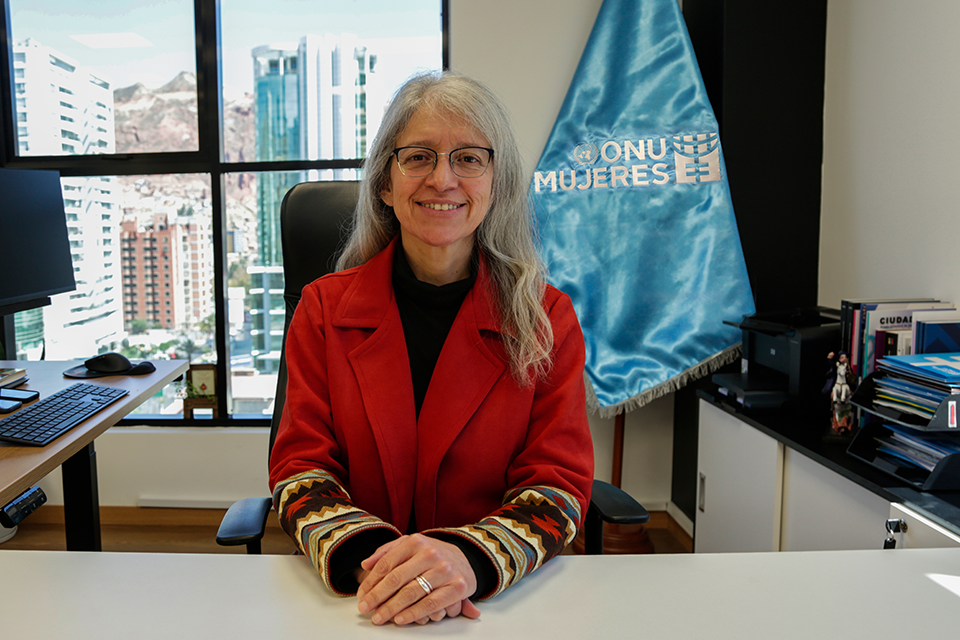Nidya Pesántez: Incorporating a gender perspective into climate action means recognizing existing barriers and making an active effort to eliminate them.
Date:

Every April 22nd, we commemorate International Mother Earth Day, a date officially recognized by the United Nations through General Assembly Resolution 64/196, adopted on December 21, 2009. This recognition marked a political milestone in the global environmental agenda by emphasizing the need to foster a balanced and respectful relationship between humanity and the planet we inhabit.
While the official origin of this day is rooted in the political and social movements of the second half of the 20th century, the concept of “Mother Earth” has long existed in many communities around the world. It reflects a deeper cultural worldview that sees the Earth as a feminine, sacred, and life-giving being. For many Indigenous peoples, this spiritual and symbiotic bond with the Earth is at the core of their cosmovision and way of life. Recognizing, reclaiming, and valuing these ways of understanding and inhabiting the world is essential if we are truly committed to building a sustainable future, one where care for life, reciprocity, and respect for natural cycles is not optional, but the guiding principle of our collective decisions.
In this spirit, International Mother Earth Day also invites us to reflect on those who play a fundamental role in nurturing this balanced relationship with nature: women. Women are the weavers of the web of life — a network of relationships connecting people and ecosystems, sustained through care, knowledge, and interdependence. Through their daily actions, wisdom, and resistance, women not only confront the impacts of the climate crisis but also lead transformative solutions that repair the bond between humanity and nature.
To further explore this issue, we speak with Nidya Pesántez, Head of the Regional Hub on Gender, Environment and Climate Justice at UN Women, and UN Women Representative in Bolivia.
In this context of environmental crisis and multiple threats, what does it really mean to integrate a gender perspective into climate policies and actions?
Latin America and the Caribbean is home to around 335 million women and girls, at least 63 million of whom live in rural areas with direct and ongoing interaction with nature. Climate change is expected to push over 158.3 million women and girls into poverty, 16 million more than the number of affected men and boys. Women are particularly vulnerable to environmental crises due to the intersection of multiple forms of inequality, such as ethnicity, age, economic status, marital status, health conditions, and migration status, among others. Integrating a gender perspective into climate action means recognizing these structural barriers and taking deliberate steps to dismantle them. This not only involves mitigating the disproportionate impacts women face but also recognizing and strengthening their leadership and contributions to collective well-being and climate action.
Based on your extensive experience, how are women across Latin America and the Caribbean leading sustainable solutions from their territories?
Many voices have long warned of the urgent need to rebuild our relationship with Mother Earth, among the most powerful of these are those of women. Especially women rooted in their territories and communities, who quietly and continuously hold together the threads of care, production, knowledge transmission, and environmental defense. Their role, historically rendered invisible, is more vital than ever to addressing the climate crisis through a lens of justice, inclusivity, and transformation. Beyond high-level decision-making spaces, women are protecting seeds, safeguarding water sources, resisting the loss of land and knowledge, and keeping ancestral practices of harmony with nature alive.
In many contexts, women are already leading conservation efforts. Could you share some inspiring examples?
UN Women makes an important and necessary effort to document and amplify the voices of women who, from their territories and knowledge systems, are driving transformative solutions to environmental crises. For example, here in Bolivia, Rosa Jalja, a journalist, leader, and member of the Network of Women United in Defense of Water—highlights the crucial role of women in conserving Lake Titicaca. Since 2016, she has led community actions to protect the lake’s water resources, including cleanup campaigns, pollution monitoring, and the promotion of sustainable practices in collaboration with local authorities. Rosa has also used local radio as a tool to raise awareness about lake conservation and the rights of surrounding communities. Another inspiring example is that of Afro-Bolivian women from the community of Tocaña in the municipality of Coroico (La Paz), who have revived the use of native medicinal plants through the initiative “La Botica Viva” (The Living Pharmacy). This project seeks to protect the biodiversity of Mother Earth’s ecosystem while recovering and sharing the ancestral knowledge of the women of Tocaña, giving it renewed value and visibility both within and beyond their communities. These are just two of the many examples across Latin America and the Caribbean.
What role does UN Women play in supporting governments and civil society to ensure that climate policies are fairer and more inclusive?
UN Women has developed a Regional Strategy on Gender, Environment, and Climate Justice, aimed at contributing to a new development model by integrating a gender perspective into environmental policies, legal frameworks, plans, programs, budgets, and data. Within this framework, the project “Gender, Environment and Climate Change: Advancing Efficient, Just and Effective Actions” — financed by the Grand Duchy of Luxembourg — anchors the strategy through three core pillars:
- Generating sex-disaggregated data to highlight the differentiated impacts of climate change and the contributions of women and men to climate action — helping inform and shape evidence-based public policy.
- Strengthening public institutions to effectively integrate gender equality into climate governance and ensure women’s participation in decision-making processes.
- Empowering civil society, through grants that support women-led initiatives to reduce climate vulnerability at the local level, while promoting the incorporation of gender perspectives into the work of environmental organizations.
This comprehensive approach seeks to ensure that climate justice and gender equality are central to the region’s climate responses — fostering solutions that are more inclusive, equitable, and impactful.